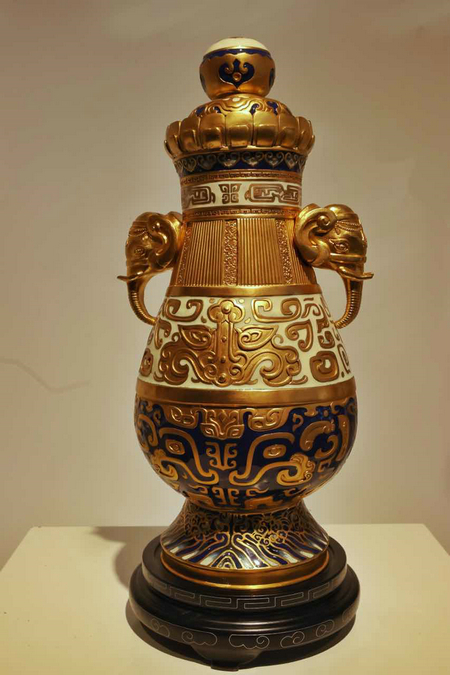

"When I was a designer, before learning with Zhang, I only painted on paper. Now, my paintings not only appear on paper but also come alive as real objects. That makes me very happy and proud," says Xi.
"I've never found learning cloisonne boring because, to me, it's a magical process to turn a piece of metal into a piece of art. I used to spend the whole night watching the colors change during the firing process."
Zhang says: "Unlike traditional cloisonne artisans, who strictly follow their masters' instructions, Xi is full of creativity and imagination when it comes to design. She is also very bold with the use of colors. Her creations are unique."
One item Xi made was inspired by a pipa (a traditional Chinese lute) that's depicted in the murals of the Mogao Caves, a UNESCO World Heritage Site in Northwest China's Gansu province.
Named Shengshi Hefeng, or Prosperity and Harmony, the black, blue and gold vase, which resembles the pear-shaped instrument, combines the traditional techniques of cloisonne and filigree inlay.
Xi also made a pair of items named Dragon and Phoenix that combine cloisonne with carved lacquer, which is also one of the Yanjing Eight Palace Handicrafts.
She hopes to bring jingtailan into people's daily lives by making everyday items like jewelry, boxes and incense burners.
"I don't consider myself an artist, although I design and paint. I like the word artisan, which is not only about the creative side but also about functional value," Xi says.
"Artisans make cloisonne products with their hands and — through skill, experience and talent — they can create things of great beauty that are also useful."
Contact the writer at chennan@chinadaily.com.cn